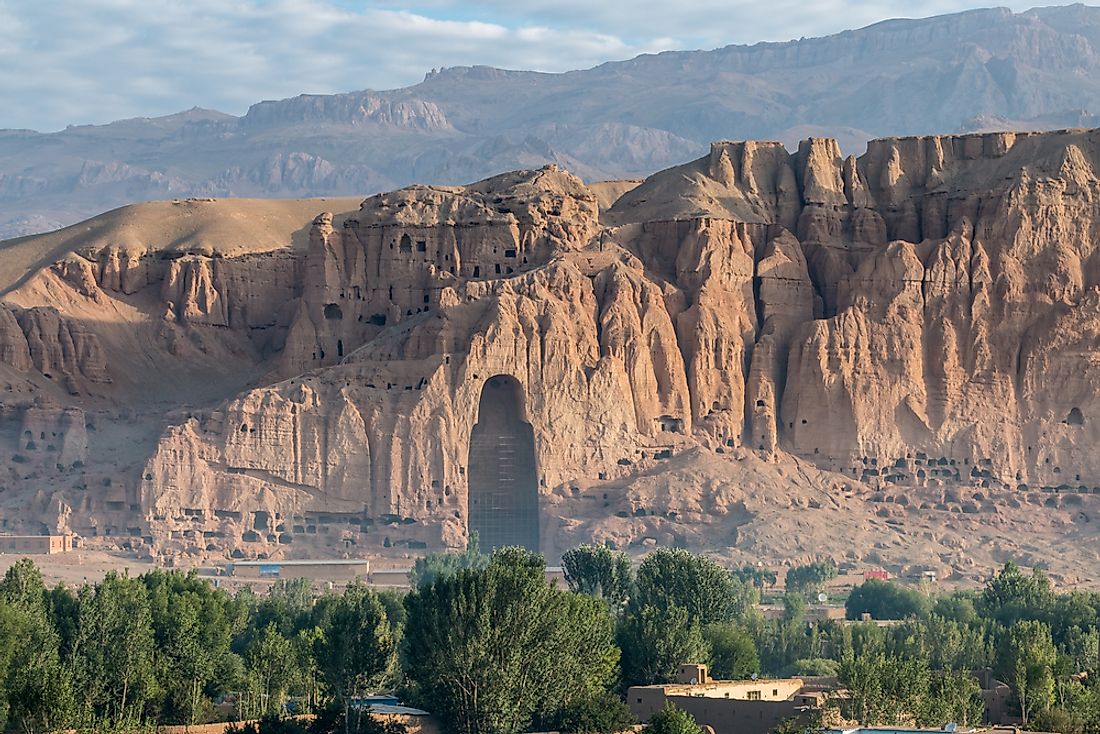What Were the Buddhas of Bamiyan?

The Buddhas of Bamiyan were a pair monumental statues carved into a cliff in Afghanistan’s Hazarajat territory during the 6th century CE. The statues depicted Gautam Buddha and were prominent archeological sites that displayed the largest ever figures of Buddha. The two statues, which measured 115 and 174 feet tall, stood for hundreds of years until they were destroyed by the Taliban in 2001. The smaller and the larger statues were popularly known as "Shahmama" and "Solsol," respectively. The statues displayed classic Gandhara artwork on sandstone cliffs, and a finish layer was modeled from a mixture of mud and straw and then coated with rare stucco to enhance the features of the hands, folds of the robe, and face. Although nothing is known about the sculptors and who commissioned the statues, the highlight the strong existence of Buddhism.
History of the Buddhas of Bamiyan
The Buddhas of Bamiyan were carved in the Bamyan valley, which is located along the Silk Road and was the caravan route connecting China and the Western world. The site was a flourishing center for religion, art, and philosophy, and monks living in the numerous Buddhist monasteries near the valley made the region a thriving Buddhist site prior to Islamic invasion in the 7th century. It was during this period, which ranged from the 3rd and 6th century CE, that the Buddhas of Bamiyan were carved and served as major landmarks of the religion.
Attacks on the Buddhas of Bamiyan
During the Islamic invasion, Buddhists were converted to Islam, either willingly or by force. Since Buddhism was no longer recognized, various attacks on the Buddhas of Bamiyan occurred, including the use of heavy artillery and cannon fire. However, none of these attacks were able to destroy the carvings since they were embedded in the mountain. Centuries later, Afghan King Abdur Rahman Khan was able to destroy the face of one statue when he launched a military attack to suppress a rebellion by the Shia Hazara.
In 1997, Taliban military commander Abdul Wahed vowed to destroy the Buddhas. Wahed proceeded ahead to drill holes in the heads of the statues so that explosives could inserted, but was stopped by a governor and Taliban founder Mohammed Omar. A decree to preserve the statues was later issued in July 1999 by Mohammed Omar. The government observed that since the religion was no longer practiced they posed no religious threat, and that the statues could serve as a tourist attraction to generate income.
Destruction of the Buddhas of Bamiyan
Despite the decree introduced in 1999, a radical Afghan group lauched a crackdown against any "un-Islamic artifacts." As a result, the Buddhas of Bamiyan were considered to be against the tenets of Islamic teachings, and destruction of the statutes began on March 2, 2001. Destruction of the statues occurred in stages and took several weeks to complete. Artillery and anti-aircraft guns caused damaged but did not demolish the solid statues. A second stage involved placing of anti-tank mines beneath the niches to cause further destruction. Finally, holes were drilled, explosives placed, and a rocket was used to completely obliterate the statues. The process left massive voids in the cliff.
Discoveries After the Destruction
Since the statues were destroyed, 50 caves have been discovered, and 12 contained unique wall paintings and other Buddhist architecture. Parts of another statue, known as the reclining Buddha, were also discovered. Researchers have been able to analyze the remains in order to ascertain the materials used in constructing both the statue and the cave paintings, leading researchers to reassess the findings of other ancient ruins.











